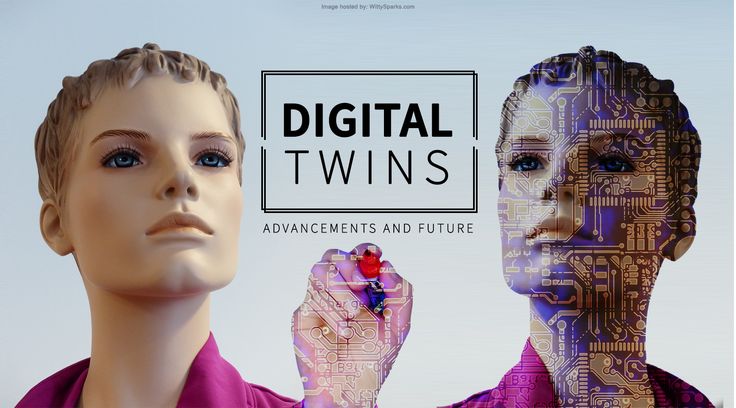You want to cut costs, avoid downtime, and increase efficiency. Digital twin technology makes that possible—by creating real‑time virtual replicas of your physical assets and processes.

In this guide, you’ll learn:
- What digital twins are, and how they work at scale
- Top benefits for industrial operations
- Case studies from leading companies
- How to get started with your own digital twin deployment
- Common pitfalls and solutions
- Frequently asked questions
Every insight is backed by credible sources, embedded directly into the keywords you see below, so you can dive deeper where you need to.
1: What Is a Digital Twin? ( “digital twin technology definition”)
A digital twin is a dynamic virtual representation of a physical system—driven by IoT data, sensors, cloud and AI. It mirrors your real‑world asset in real time, enabling you to simulate, monitor, and optimize.
- Originally coined by Michael Grieves and used at NASA for spacecraft simulators.
- Today, used in smart factories and industrial metaverse environments (Number Analytics, WIRED).
2: High‑Value Benefits of Digital Twin Technology
Here are the major gains you can unlock:
- Reduced unplanned downtime – monitoring equipment leads to up to 45% less downtime (Number Analytics).
- Improved quality control – Siemens reports up to a 50% reduction in defects (Number Analytics).
- Cost reduction across operations – saves 10–25 % in development and operational costs (Number Analytics).
- Faster time‑to‑market – virtual prototyping can cut development time by 50% (A M King).
- Sustainability gains – reduce scrap by ~20% and improve traceability (McKinsey & Company).
- Supply chain optimization & flexibility – adapt logistics using real‑time data (A M King, McKinsey & Company).
3: How Digital Twins Power Industry 4.0
Digital twins are central to smart manufacturing and the fourth industrial revolution. They connect IoT sensors, data analytics, AI, and cloud computing to form cyber‑physical systems that automate decision‑making.
- Smart factories rely on digital twins to simulate and coordinate logistics, production, and asset maintenance (Wikipedia).
- They enable real‑time process monitoring and closed‑loop optimization (Wikipedia, Simio).
4: Real‑World Examples of Digital Twin in Action.
BMW
- BMW built a virtual factory twin using NVIDIA’s Omniverse platform.
- They simulate assembly lines before physical construction—spotting errors early, saving millions (WIRED, WIRED).
Example: GE Digital & SAGW
- GE Digital’s digital twin library manages thousands of assets.
- At Shanghai Automobile Gear Works, they improved utilization by 20% and cut storage costs by 80% (Wikipedia).
Like: DXC Technology & ISA Vías (Chile)
- Created a twin of roadway systems for traffic optimization and emergency response (Axios).
5: Key Technologies Behind High‑Performance Digital Twins
Companies succeed when they integrate:
- IoT & sensor networks – feed real‑time operational data.
- AI & machine learning – detect anomalies, forecast failures, optimize workflows (Simio, hivemq.com).
- Cloud & edge computing – for scalability and fast response.
- Spatial computing / industrial metaverse – platforms like Omniverse for engineering collaboration and simulation (WIRED).
6: Comparison Table: Digital Twin Platforms & Use Cases
| Platform / Vendor | Typical Use Case | Key Strength | Industries |
|---|---|---|---|
| Siemens Digital Twin Suite | Product design, factory simulation | End‑to‑end integration | Manufacturing, energy |
| GE Digital Core Assets | Remote asset monitoring and maintenance | Asset blueprint library + analytics | Power, utilities, heavy industry |
| NVIDIA Omniverse | Virtual factory, layout optimization | High‑fidelity spatial simulation | Automotive, facilities |
| Akselos | Infrastructure asset lifetime modeling | Simulation of energy infra | Energy utilities, offshore |
7: Getting Started: Actionable Digital Twin Implementation Plan
Here’s the roadmap you can follow:
- Set clear objectives – pinpoint pain points like downtime or quality issues.
- Pilot small scale – start with one asset or factory line.
- Form cross‑functional team – operations, IT, data science, maintenance.
- Ensure data readiness – IoT sensors, edge connectivity, data governance (Number Analytics, Wikipedia, dataPARC, Wikipedia).
- Choose scalable platforms – integrate AI, cloud, and simulation tools.
- Measure outcomes and expand – track ROI, downtime savings, defect reduction.
8: Common Pitfalls & How You Avoid Them
You can avoid these pitfalls:
- Data silo & poor sensor infrastructure → take time to clean and structure your data.
- Lack of digital skills → invest in upskilling or partner with digital‑twin specialists (Number Analytics, McKinsey & Company).
- Ignoring security & governance – employ robust protocols.
- Over‑ambitious scope → roll out incrementally with modular pilots.
9: The Future Outlook: What’s Next for Digital Twin?
- Gartner & IDC forecast explosive growth—global market exceeding $100B by 2030, CAGR ~40% (Simio).
- Expect more AI-driven autonomous twins, augmented analytics, and sustainability modeling.
- The industrial metaverse—digital twins paired with VR/AR—will drive robotics training and cross‑plant collaboration (WIRED).
FAQ –
Q1: What industries benefit most from digital twins?
You’ll find it most valuable in manufacturing, energy, utilities, transportation infrastructure, and heavy industry. Cases include automotive at BMW, utilities via GE Digital, and infrastructure via ISA Vías.
Q2: How much does a digital twin implementation cost?
Costs vary. Pilots might start at thousands/month for software and integration. Enterprise deployments scale into six or seven‑figure investments—but payback from reduced downtime, quality improvements, and optimized operations tends to justify the spend within 12–24 months.
Q3: Can small and midsize manufacturers benefit?
Yes, SMEs often report higher ROI percentage‑wise than big firms. Many off‑the‑shelf digital twin tools scale down well to mid‑tier needs (aliresources.hexagon.com).
Q4: How does digital twin support predictive maintenance?
By ingesting real‑time data and comparing it to modeled performance thresholds, the twin predicts when equipment will fail and triggers maintenance before costly downtime occurs (Simio).
Q5: What’s the difference between a digital shadow and a true digital twin?
A digital shadow only receives data (one‑way), while a true digital twin supports two‑way communication—it can send control signals back to the physical system for real‑time optimization (Wikipedia).
Conclusion
You now see how digital twin technology empowers industrial operators to transform performance—from predictive maintenance, cost reduction, to faster product launches and sustainability gains.
By starting with a clear objective, a focused pilot, and building an integrated team with IoT and AI readiness, you can transform your industrial operations into more efficient, resilient, and competitive systems.
Dive deeper into the linked sources above to support your own business case, and begin your digital twin journey today
FELLOW US ON FACEBOOK @TRTON


